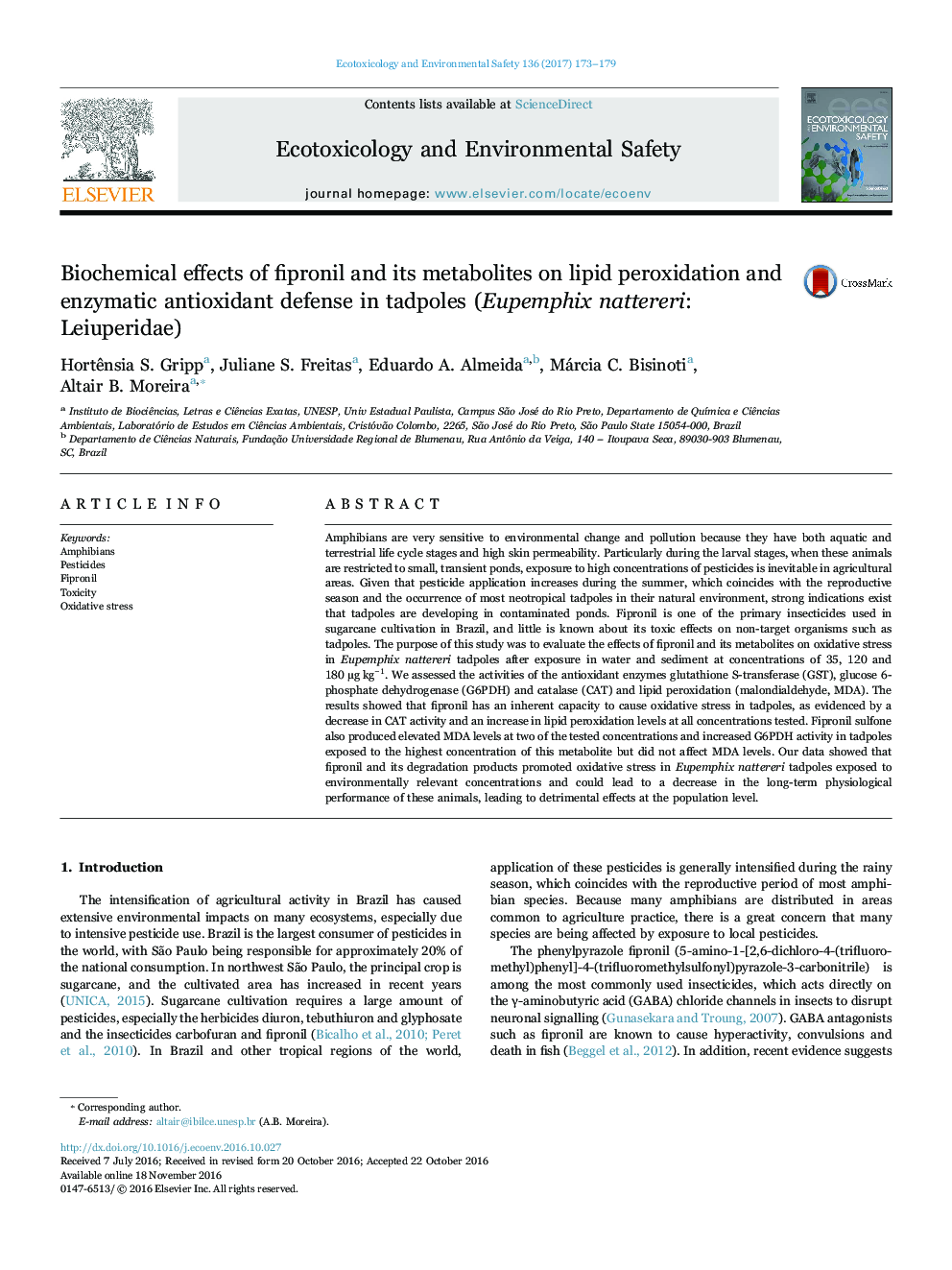| کد مقاله | کد نشریه | سال انتشار | مقاله انگلیسی | نسخه تمام متن |
|---|---|---|---|---|
| 5748126 | 1618928 | 2017 | 7 صفحه PDF | دانلود رایگان |

- Fipronil is one of the primary insecticides used in sugarcane cultivation in Brazil.
- Fipronil has an inherent capacity to cause oxidative stress in tadpoles.
- Fipronil sulfide and sulfone were less prone to causing oxidative stress in tadpoles.
Amphibians are very sensitive to environmental change and pollution because they have both aquatic and terrestrial life cycle stages and high skin permeability. Particularly during the larval stages, when these animals are restricted to small, transient ponds, exposure to high concentrations of pesticides is inevitable in agricultural areas. Given that pesticide application increases during the summer, which coincides with the reproductive season and the occurrence of most neotropical tadpoles in their natural environment, strong indications exist that tadpoles are developing in contaminated ponds. Fipronil is one of the primary insecticides used in sugarcane cultivation in Brazil, and little is known about its toxic effects on non-target organisms such as tadpoles. The purpose of this study was to evaluate the effects of fipronil and its metabolites on oxidative stress in Eupemphix nattereri tadpoles after exposure in water and sediment at concentrations of 35, 120 and 180 µg kgâ1. We assessed the activities of the antioxidant enzymes glutathione S-transferase (GST), glucose 6-phosphate dehydrogenase (G6PDH) and catalase (CAT) and lipid peroxidation (malondialdehyde, MDA). The results showed that fipronil has an inherent capacity to cause oxidative stress in tadpoles, as evidenced by a decrease in CAT activity and an increase in lipid peroxidation levels at all concentrations tested. Fipronil sulfone also produced elevated MDA levels at two of the tested concentrations and increased G6PDH activity in tadpoles exposed to the highest concentration of this metabolite but did not affect MDA levels. Our data showed that fipronil and its degradation products promoted oxidative stress in Eupemphix nattereri tadpoles exposed to environmentally relevant concentrations and could lead to a decrease in the long-term physiological performance of these animals, leading to detrimental effects at the population level.
Journal: Ecotoxicology and Environmental Safety - Volume 136, February 2017, Pages 173-179